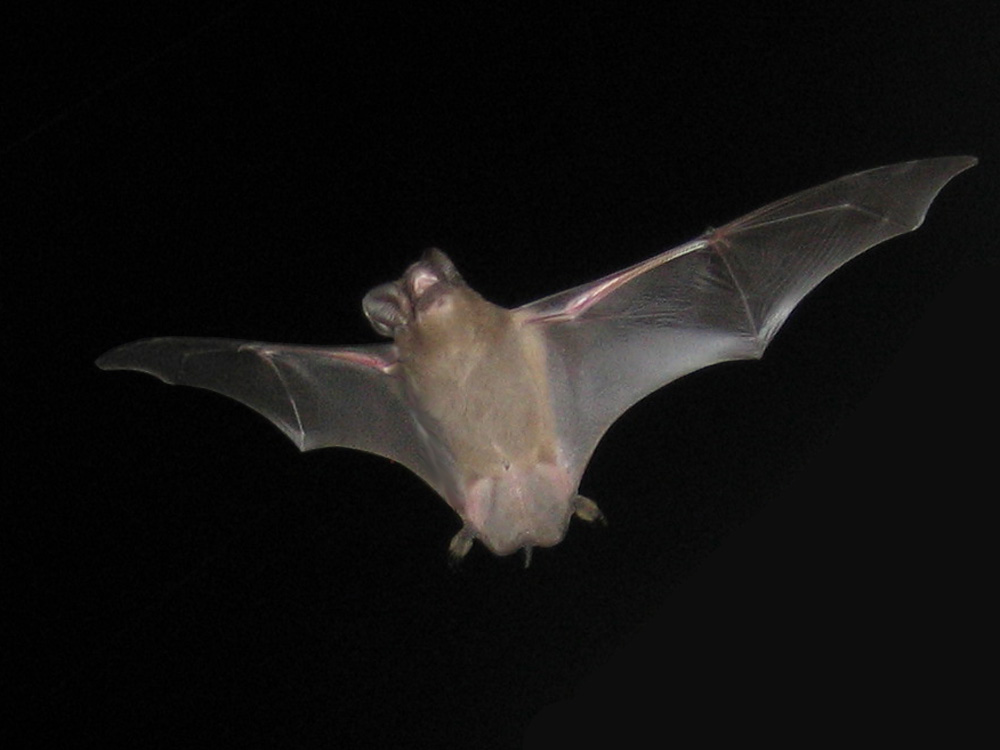|

 |
A Brazilian Freetail bat mid-flight. |
 |
If you need bat removal in your hometown, click for the National Directory of
Bat Removal Companies that I've carefully compiled in every USA city.
Mexican Freetail Bat – Rapid Transit
When a Mexican free-tail bat colony leaves their roost at dusk and returns to the roost at the break of dawn, they can take on the appearance of a airplane flight pattern. Both when leaving and returning to the roost, they form single-file lines or columns just prior to the opening of their home. They do this in order to benefit from the “breeze” or slip stream, created by the bat in front of them. In order to maintain their status as the fastest bat species in the United States, they need to take advantage of every opportunity that comes their way to keep up their impressive speed.
Of course their bodies are built for rapid travel – their bodies alone weigh less than .50 ounces. Even the fur on their bodies provide the aerodynamics they need to reach top speeds of 40 and 50 miles per hour. But it’s the way their wings are constructed that really give them the lift and speed they are so famous for. The wings of the Mexican free-tail bat are long and thin – the wingspan alone exceeds 12 inches. The fragile bony structure of the wings are set up almost like fingers throughout the “body” of the wing. That bony structure is covered by a thin membrane providing webbing between the bones. This membrane webbing enables the bat to “catch” the wind like the sail on a sailboat, so they are able to fly pretty easily, but they are also able to glide through the sky - sometimes at altitudes of 10,000 feet – with almost little effort.
A Mexican free-tail bat that makes its way into the home of a human being – usually in the attic – does so by way of an opening in the roof or under the eves around the home (as shown). Once they are in, they commonly look for access to the wall recesses or utilize the ceiling for roosting.
Bats are great animals! Unfortunately, the do often choose to roost inside home and buildings, where they can create a big mess. It's a good idea to remove the bats from your belfry or attic, but it's also a great idea to avoid
harming them! Any competent wildlife control expert should have the knowledge and expertise to safely and effectively remove an entire colony of bats from a house without harming or killing a single one. I know that I have a 100%
success rate with bat removal jobs, and I believe the list of companies that I've compiled in my directory is of similar quality. If you want to learn more, please read my How To Get Rid of Bats page.
AAAnimal Control is a privately owned wildlife removal and pest control business, located in Orlando Florida. I deal strictly with wild animals including bats inside houses. I am not an extermination company, but a critter removal
and control specialist. The above photos are some of the many that I've taken in the field over my years of work. Please email me if
you have any questions about the above photographs, or any questions about
wildlife problems or bat removal issues.
| |
|